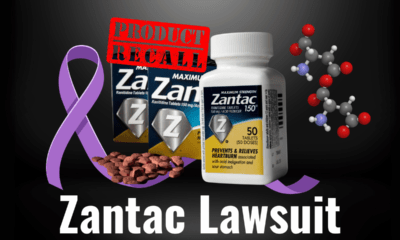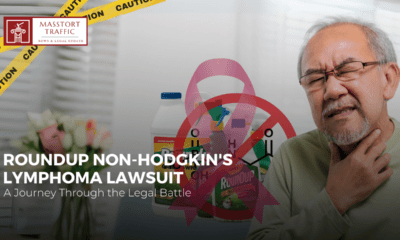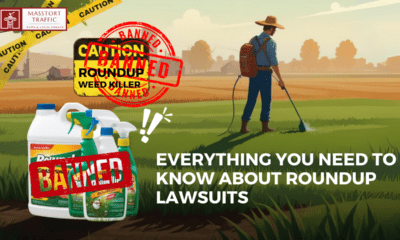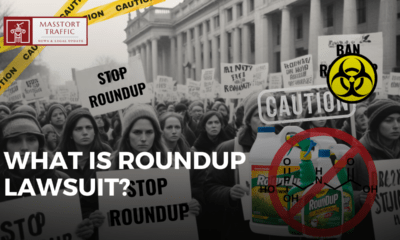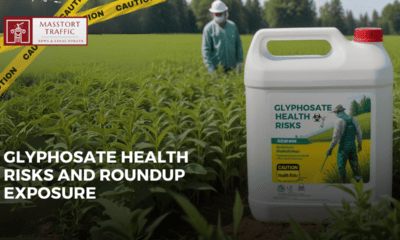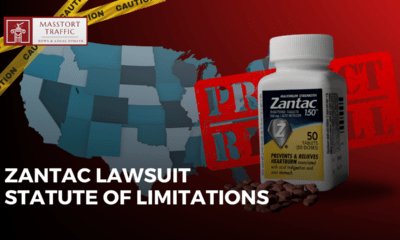Mass Torts Lawsuit
400,000+ Reports: Lawsuits Allege Uber Knew About and Ignored a Sexual Assault Crisis

When you call a rideshare service, you expect a safe journey. Unfortunately, recent lawsuits argue that the ride-sharing giant Uber knew about assaults and failed to protect its passengers, leading to a massive crisis. This situation has left many survivors feeling betrayed and searching for justice. These legal actions allege a pattern of corporate negligence over many years.
Table of Contents
The Scale of the Crisis: Reports of Assault and Injury
The allegations against Uber are deeply disturbing, claiming the company prioritized profits and rapid expansion over rideshare safety. Reports of sexual assault, harassment, and other serious safety incidents involving Uber drivers have accumulated over the past decade. The sheer volume of these claims highlights a systemic failure to address driver-related misconduct effectively.
According to a public court filing related to the consolidated litigation, over 400,000 reports of sexual assault and harassment were allegedly filed against the company globally, though not all were substantiated or linked to criminal charges. This staggering number illustrates the pervasive nature of the problem. Separately, Uber’s own U.S. Safety Report disclosed 998 sexual assault incidents during 2020 alone [Source: https://www.uber.com/en-US/newsroom/us-safety-report-2019-2020/].
These aren’t just statistics; they represent thousands of lives forever impacted by trauma and violation. Survivors are now stepping forward in unified legal action. They seek to hold the powerful corporation accountable for the harm they suffered while using a service they trusted. The purpose of these lawsuits is not only to secure compensation but also to force meaningful safety improvements across the industry.
Allegations of Corporate Negligence: Why Uber Knew About Assaults
The core of the legal claims centers on the assertion that Uber knew about assaults and other dangers but consciously decided against implementing necessary safety measures. Plaintiffs allege that the company had internal data showing a clear, ongoing pattern of misconduct. Despite this knowledge, critics say Uber did little to change its business practices.
Lawsuits argue that Uber’s actions—or lack thereof—constitute gross negligence claims. This legal term means the company demonstrated a clear and reckless disregard for the safety and well-being of its passengers. The mass tort claims suggest the company failed to employ adequate driver vetting and monitoring processes.
Failure in Driver Screening and Monitoring
A significant focus of the lawsuits is the adequacy of Uber’s driver screening. While the company conducts background checks, plaintiffs contend that these checks were insufficient. Specifically, allegations include:
- Reliance on Digital Vetting: The checks often relied solely on databases, potentially missing crimes committed by individuals without a significant digital footprint or criminal history in a specific state.
- Lack of Continuous Monitoring: Critics argue the company failed to continuously re-screen or monitor drivers for new complaints or arrests in real-time. This oversight allegedly allowed drivers with known risks to remain on the road.
- Poor Complaint Response: Lawsuits claim that when complaints of inappropriate behavior were filed, Uber’s internal response was often slow, inadequate, or entirely dismissed, allowing unsafe drivers to continue operating.
If Uber knew about assaults stemming from these systemic flaws, its decision not to fix them places the corporation directly in the crosshairs of legal liability. The legal system allows victims to seek justice when corporate greed trumps basic safety obligations.
DID YOU KNOW?
Seeking Justice Through Mass Tort Litigation
The legal landscape for these claims is complex. Because hundreds—and potentially thousands—of individuals have similar claims against a single entity (Uber), these cases are often consolidated into a type of complex legal action known as a mass tort or Multidistrict Litigation (MDL).
Mass tort cases allow survivors to combine their resources, evidence, and legal strategy. This collective approach levels the playing field against a massive corporation with unlimited legal defenses. While each claim remains individually judged on its facts, the consolidation simplifies the pre-trial process and speeds up the path to resolution.
If you have been a survivor of an assault, whether sexual or physical, while riding in an Uber, you may have grounds to join this litigation. You don’t need to navigate this trauma alone. Seeking legal help is the crucial first step toward recovery and securing deserved financial compensation.
The goal of these legal actions is to recover damages for the tremendous losses suffered by survivors. These damages can include:
- Medical and psychological treatment costs.
- Lost wages or reduced earning capacity.
- Pain and suffering (past and future).
- Punitive damages, intended to punish the company for its reckless behavior.
Understanding your rights and whether your experience fits the criteria for the existing litigation is vital. The statute of limitations, which is the legal deadline for filing a claim, varies by state and situation, making prompt action necessary.
Your attorney can investigate the specifics of your case, review the driver’s history, and determine how Uber’s negligent actions may have contributed to your harm. [INTERNAL_LINK: /your-relevant-article-slug] This personalized approach ensures your unique experience is fully heard and documented. The focus remains on survivor support and achieving justice.
Ready to Take the First Step Toward Justice?
Speak with our trusted legal team today. Your Free, Confidential, No-Obligation Case Evaluation is waiting — and it only takes a minute to begin.
GET YOUR FREE CASE EVALUATION NOW →Prefer to talk now? Call (+1) 210-940-9440 Today
 100% Secure & Confidential
|
100% Secure & Confidential
|
 No Obligation Consultation
No Obligation ConsultationBy submitting this form, you agree to be contacted by a trusted legal partner for a free case review. This does not create an attorney-client relationship. Confidential and secure.
By joining the collective voice of survivors, you not only seek justice for your own suffering but also contribute to a powerful legal movement demanding greater accountability for rideshare companies. Don’t wait to explore your options and take the first step toward reclaiming control.
EXTERNAL SOURCES
- Uber U.S. Safety Report (cited for data): https://www.uber.com/en-US/newsroom/us-safety-report-2019-2020/
- Legal resource on Multidistrict Litigation (MDL): https://www.uscourts.gov/rules-policies/judiciary-policies/multidistrict-litigation
- National Sexual Assault Hotline (general support): https://www.rainn.org/
“Justice for your child has a deadline. In Rideshare Sexual Abuse lawsuits, delay equals denial. Act now.”
— Visit MassTortTraffic.com or Call (+1) 210-940-9440
Mass Torts Lawsuit
The Uber Sexual Assault Lawsuit: Holding the Company Accountable, Not Just the Driver
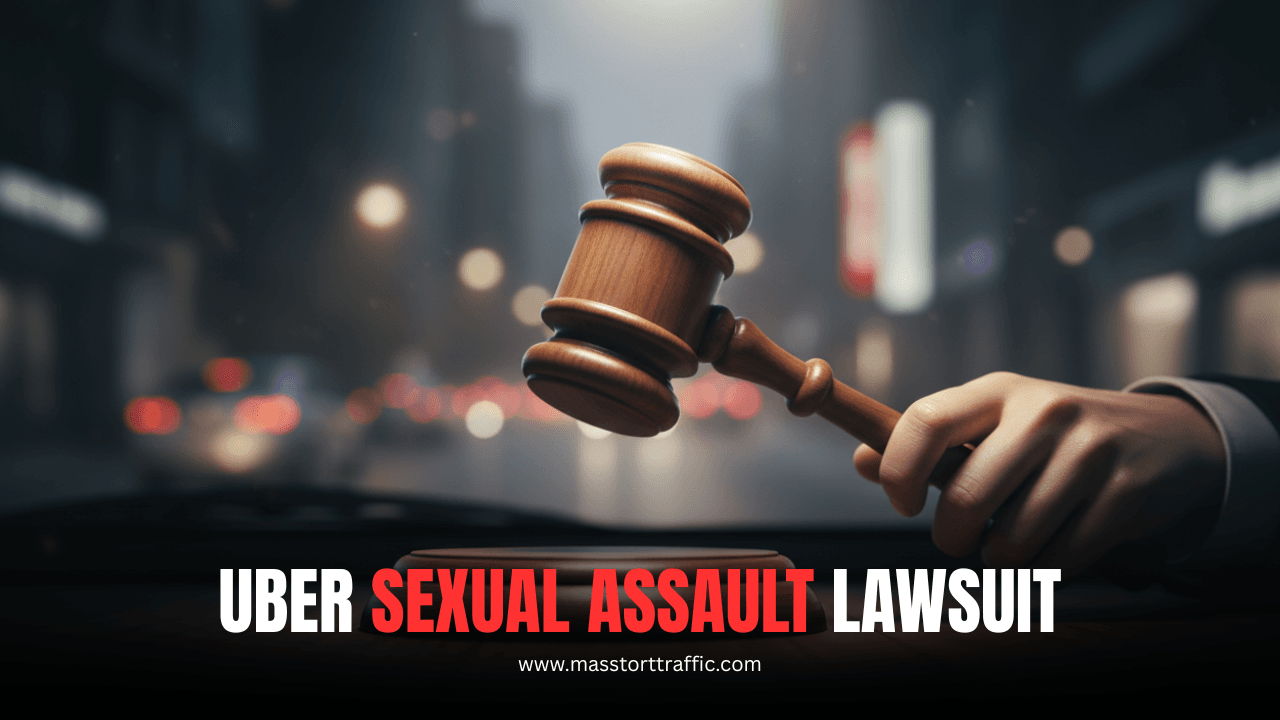
When you order a rideshare, you place your trust in a system that promises a safe trip. The devastating reality for thousands of passengers is that this trust was broken. If you or a loved one experienced an assault during an Uber ride, please know you are not alone, and this was not your fault.
The ongoing Uber sexual assault lawsuit is not just about the horrific actions of individual drivers; it’s about holding the multi-billion-dollar corporation accountable for alleged systemic safety failures that put passengers directly in harm’s way.
Table of Contents
What Is the Uber Sexual Assault Lawsuit?
This is not a single case but a massive legal action involving thousands of survivors from across the country.
Because so many people came forward with similar stories, these individual lawsuits have been consolidated into a special federal proceeding called a Multidistrict Litigation, or MDL.
This MDL, officially known as In re: Uber Technologies Inc., Passenger Sexual Assault Litigation (MDL No. 3084), centralizes the cases in one court. As of late 2025, over 2,700 plaintiffs have joined this action, which is expected to continue growing.
Consolidating the cases this way makes the legal process more efficient. It allows survivors to pool their resources and present a unified front, arguing that Uber repeatedly failed to protect its passengers on a national scale.
Why Is Uber Being Sued? The Core Allegations of Negligence
The central argument in these rideshare assault claims is that Uber was negligent. This means the company had a duty to keep its passengers reasonably safe, breached that duty through its actions or inaction, and this failure contributed to passengers being harmed.
Survivors allege that Uber knew about the risks of sexual assault on its platform for years but prioritized rapid growth and profits over implementing necessary safety measures.
Inadequate Background Checks and Driver Screening
A key pillar of the lawsuit is the claim that Uber’s driver screening process is dangerously flawed. Lawsuits allege that the company’s background checks were insufficient and failed to identify drivers with criminal histories or red flags that should have disqualified them from driving.
Allegations against Uber include:
- Failing to conduct thorough background checks that could have flagged dangerous individuals.
- Not requiring fingerprint-based checks, which are a more robust screening tool.
- Allowing drivers to remain on the platform even after passenger complaints of misconduct were filed against them (known as negligent retention).
Failure to Implement Known Safety Features
Perhaps most disturbingly, court documents reveal that Uber had developed or tested advanced safety features that could have prevented assaults but chose not to implement them widely.
These shelved safeguards reportedly included in-app panic buttons, live audio monitoring, and alerts for when a car deviates from its route or stops for an unusual length of time.
Internal records suggest that company executives worried that rolling out these features might hurt driver recruitment or signal to the public that the platform was unsafe. The lawsuit argues that this was a conscious decision to accept a known risk to passengers in order to protect the company’s image and bottom line.
Your Legal Rights: Can You File a Lawsuit Against Uber?
If you were the victim of sexual assault, kidnapping, harassment, or another violent act by an Uber driver, you may have the right to file a lawsuit and seek compensation.
Filing a claim is about more than just money; it is about seeking justice and holding a powerful corporation accountable for its role in what happened. Compensation recovered in a successful Uber sexual assault lawsuit can help cover critical expenses and acknowledge the profound harm you have suffered.
Damages may include funds for:
- Medical bills for physical injuries.
- Therapy, counseling, and mental health treatment for trauma like PTSD.
- Lost wages from time taken off work to recover.
- Pain, suffering, and emotional distress.
Uber has a team of powerful lawyers dedicated to defending the company. They often argue that drivers are “independent contractors” to avoid responsibility. However, an experienced attorney who understands this specific litigation can fight back against these tactics and build a strong case on your behalf.
Taking the first step is often the hardest, but you do not have to go through this alone. A confidential case evaluation can help you understand your options without any pressure or obligation. Your story deserves to be heard, and you have the right to seek justice.
Ready to Take the First Step Toward Justice?
Speak with our trusted legal team today. Your Free, Confidential, No-Obligation Case Evaluation is waiting — and it only takes a minute to begin.
GET YOUR FREE CASE EVALUATION NOW →Prefer to talk now? Call (+1) 210-940-9440 Today
 100% Secure & Confidential
|
100% Secure & Confidential
|
 No Obligation Consultation
No Obligation ConsultationBy submitting this form, you agree to be contacted by a trusted legal partner for a free case review. This does not create an attorney-client relationship. Confidential and secure.
Pursuing legal action can not only help you on your personal journey to recovery but also contributes to a larger movement demanding meaningful safety reforms for all rideshare passengers.
EXTERNAL SOURCES
- https://www.lawsuit-information-center.com/uber-sex-assault-lawsuit.html
- https://www.uber.com/us/en/safety/
- https://verusllc.com/articles/case-management/updates-from-the-consolidated-mdl-the-uber-sexual-assault-litigation/
“Justice for your child has a deadline. In Rideshare Sexual Abuse lawsuits, delay equals denial. Act now.”
— Visit MassTortTraffic.com or Call (+1) 210-940-9440
Baby Formula NEC
How to Find Out if Your Baby Was Given Cow’s Milk Formula in the Hospital
If your premature baby developed necrotizing enterocolitis (NEC), one of the most critical questions is: What were they fed in the NICU? Answering this question is the first step in a potential lawsuit, and the proof lies in your baby formula hospital records. This guide explains how to get them.
Key Takeaways: The NEC Baby Formula Lawsuit
- ◆ The Scientific Link: Decades of research show that cow’s milk-based baby formulas, such as Similac® and Enfamil®, significantly increase the risk of necrotizing enterocolitis (NEC) in premature infants. NEC is a severe and often fatal intestinal disease that causes inflammation and death of intestinal tissue.
- ◆ The Legal Claim: Hundreds of families are filing lawsuits against manufacturers Abbott Laboratories and Mead Johnson. The core legal argument is “failure to warn” — that the companies knew their products posed a deadly risk to preemies but deliberately chose not to add a warning label for parents and doctors.
- ◆ Your Family’s Rights: If your premature infant was fed a cow’s milk-based formula in the hospital and was later diagnosed with NEC, your family may be eligible to seek significant compensation for medical bills, pain and suffering, and more. Our team is actively investigating these claims to help families get the justice they deserve.
Ready to Fight for Your Compensation?
Your Free, Confidential, No-Obligation Case Evaluation is Waiting!
GET YOUR FREE CASE EVALUATION NOW →Prefer to call? Call (+1) 210-940-9440 Today
Table of Contents
Why Feeding Records Are Critical for a NEC Lawsuit
Hundreds of lawsuits have been filed against Abbott Laboratories and Mead Johnson, the makers of Similac® and Enfamil®. The lawsuits allege that these companies knew for decades that their cow’s milk-based formulas significantly increase the risk of NEC in premature infants but failed to warn parents and doctors.
To file a successful NEC lawsuit, you must be able to show that your child was given one of these specific bovine-based products. While you may not remember the exact formula used during such a stressful time, the hospital keeps detailed records of everything your baby consumed. These baby formula hospital records are the most important piece of evidence in your case.
DID YOU KNOW?
Your Right to Access Your Child’s Medical Records
Under a federal law called the Health Insurance Portability and Accountability Act (HIPAA), you have a legal right to access your child’s medical records. As a parent or legal guardian, HIPAA recognizes you as your minor child’s “personal representative,” giving you the authority to request and receive copies of their complete health information.
Hospitals are required to have a clear process for these requests and must provide the records within a reasonable timeframe, typically 30 days.
How to Request Your Baby’s Hospital Records: A Step-by-Step Guide
The process for requesting records is similar at most hospitals. While it can seem intimidating, following these steps will help you get the information you need.
Step 1: Contact the Hospital’s Medical Records Department
The first step is to locate the correct department. This is usually called the “Health Information Management” (HIM) or “Medical Records” department. You can typically find their contact information and specific instructions on the hospital’s website or by calling the hospital’s main phone number.
Step 2: Complete the Authorization Form
You will need to fill out a form called an “Authorization to Release Health Information” or a similar title. This form gives the hospital legal permission to release your child’s private health information to you.
Be prepared to provide the following information:
- Your child’s full name and date of birth.
- The dates of their hospital stay (the admission and discharge dates for their time in the NICU).
- Your name and relationship to the child (parent/legal guardian).
- A copy of your photo ID to verify your identity.
Step 3: Specifically Request Feeding Records
This is the most important part of your request. In addition to asking for the complete medical chart, you need to be very specific about the feeding information. On the authorization form, under the section for “Information to be Released,” be sure to request:
- “All feeding records, charts, and logs”
- “Nutrition records”
- “A detailed list of all formulas and human milk fortifiers administered, including brand names (e.g., Similac, Enfamil) and specific product types (e.g., Special Care, NeoSure).”
These records may be called different things, such as an “Infant Feeding Record,” “Newborn Feeding and Diaper Changing Log,” or simply be part of the daily nursing notes. By being specific, you ensure the hospital provides the exact proof you need.
Step 4: Submit the Request and Follow Up
You can usually submit the completed form by mail, fax, or in person. Some hospitals may charge a small fee for copying the records. If you don’t hear back within a week or two, call the department to confirm they received your request and to ask for an estimated completion time.
What If I Need Help? An NEC Lawyer Can Get Records for You
If this process feels overwhelming or if the hospital is unresponsive, you do not have to do it alone. An experienced NEC baby formula lawyer can handle the entire process of requesting baby formula hospital records for you.
Lawyers and their legal teams retrieve medical records for clients every day. They know exactly what to ask for, how to navigate the hospital’s bureaucracy, and how to compel the release of records if the hospital delays. This service is typically part of their free case evaluation.
Ready to Take the First Step Toward Justice?
Speak with our trusted legal team today. Your Free, Confidential, No-Obligation Case Evaluation is waiting — and it only takes a minute to begin.
GET YOUR FREE CASE EVALUATION NOW →Prefer to talk now? Call (+1) 210-940-9440 Today
 100% Secure & Confidential
|
100% Secure & Confidential
|
 No Obligation Consultation
No Obligation ConsultationBy submitting this form, you agree to be contacted by a trusted legal partner for a free case review. This does not create an attorney-client relationship. Confidential and secure.
Obtaining your baby’s feeding records is a crucial and empowering first step. This documentation provides the answers you deserve and is the key to holding formula manufacturers accountable for the harm they may have caused your family.
“Don’t lose your right to compensation. In NEC lawsuits, delay is denial. Act today.”
— Visit MassTortTraffic.com or Call (+1) 210-940-9440
EXTERNAL SOURCES
- U.S. Department of Health & Human Services (HHS) – Your Rights Under HIPAA: https://www.hhs.gov/hipaa/for-individuals/guidance-materials-for-consumers/index.html
- U.S. Department of Health & Human Services (HHS) – Does the HIPAA Privacy Rule allow parents the right to see their children’s medical records?: https://www.hhs.gov/hipaa/for-professionals/faq/227/does-hipaa-allow-parents-right-to-see-childrens-medical-records/index.html
- World Health Organization (WHO) – BFHI Section 4: Hospital Self-Appraisal and Monitoring (describes infant feeding records):(https://www.ncbi.nlm.nih.gov/books/NBK153494/)
Frequently Asked Questions About the NEC Baby Formula Lawsuit
Section 1: The Basics of NEC and the Lawsuit
The lawsuits allege that manufacturers of cow’s milk-based formulas, specifically Abbott Laboratories (maker of Similac®) and Mead Johnson (maker of Enfamil®), knew for decades that their products significantly increased the risk of necrotizing enterocolitis (NEC) in premature infants but failed to warn parents and doctors.
Necrotizing enterocolitis (NEC) is a serious and often life-threatening intestinal disease that primarily affects premature and low-birth-weight infants. It causes severe inflammation that can destroy intestinal tissue, leading to a hole (perforation) in the gut, which can cause overwhelming infections like sepsis.
The lawsuits primarily name cow’s milk-based products from Similac and Enfamil that are designed for premature infants. These include specialized formulas and “human milk fortifiers” (which are also bovine-based) such as Similac Special Care, Similac NeoSure, Enfamil NeuroPro EnfaCare, and Enfamil Human Milk Fortifier.
A premature baby’s digestive system is underdeveloped and can’t easily digest the proteins in cow’s milk. This is believed to trigger an inflammatory response that damages the fragile intestinal lining, leading to NEC. Human breast milk contains protective antibodies and immune cells that help a preemie’s gut mature and fight infection.
No. As of late 2025, there has not been a recall of these formulas specifically for the risk of NEC. The lawsuits are based on the manufacturers’ “failure to warn” about the known risks, not a specific contamination or manufacturing defect that would typically trigger a recall.
Symptoms can appear suddenly and include a swollen, hard, or discolored (red or blue) abdomen, bloody stools, green or yellow vomit, difficulty feeding, lethargy (sluggishness), and changes in heart rate, breathing, or body temperature.
Section 2: Eligibility and Filing a Claim
You may be eligible to file a lawsuit if your child was born prematurely or with a low birth weight, was fed a cow’s milk-based formula (like Similac or Enfamil), and was subsequently diagnosed with necrotizing enterocolitis.
Not necessarily. Most states have a “discovery rule,” which means the time limit (statute of limitations) may not start until you discovered the link between the formula and your child’s NEC, which for many parents was only recently. It is crucial to speak with a lawyer immediately to understand the deadline in your state.
The deadline, or statute of limitations, varies by state but is typically two to three years. However, the “discovery rule” and special exceptions for injuries to minors can extend this deadline, so you should not assume it’s too late.
Yes. If you tragically lost your child to NEC, your family may be able to file a wrongful death lawsuit. This type of claim seeks compensation for medical and funeral expenses, as well as for your family’s emotional distress and suffering.
This is very common, and you can still have a case. An experienced NEC lawyer can obtain and review your child’s hospital medical and feeding records to identify the exact products that were used.
It is less common, but you may still have a case. While the vast majority of NEC cases affect premature infants, full-term babies with other health issues can also develop NEC. It is best to consult an attorney to evaluate your specific situation.
Section 3: The Legal Process
The first step is to get a free case review from a law firm that specializes in these cases. They will listen to your story, review the basic facts, and determine if you may be eligible to file a claim. There is no cost or obligation for this consultation.
Ready to Fight for Your Compensation?
Your Free, Confidential, No-Obligation Case Evaluation is Waiting!
GET YOUR FREE CASE EVALUATION NOW →Prefer to call? Call (+1) 210-940-9440 Today.
There are no upfront costs. Reputable law firms handle these cases on a contingency-fee basis, which means they only get paid if they successfully recover compensation for you through a settlement or verdict.
No, it is a mass tort, which is handled through a Multidistrict Litigation (MDL). In a mass tort, each family’s case remains individual, and compensation is based on the specific harm your child suffered. This is different from a class action, where all plaintiffs typically receive the same settlement amount.
MDL stands for Multidistrict Litigation. The NEC MDL (MDL 3026) is a process that consolidates all federal lawsuits into a single court in Illinois to streamline pretrial proceedings like evidence gathering. This makes the process more efficient for everyone involved.
Bellwether trials are “test cases” selected from the larger group of lawsuits in the MDL to be tried first. The outcomes of these trials help both sides understand how juries might respond to the evidence and often guide negotiations for a global settlement for the remaining cases.
These cases can take several months to a few years to resolve. The timeline depends on the complexity of the case and the progress of the larger MDL, including the results of the bellwether trials.
Section 4: Compensation and Settlements
As of late 2025, there has not been a global settlement for all the cases in the federal MDL. However, individual state court trials have resulted in massive verdicts for families, including a $60 million verdict against Enfamil’s maker and a $495 million verdict against Similac’s maker.
The value of each case is unique and depends on the severity of the injury. Legal experts estimate that potential payouts could range from $50,000 for cases with a full recovery to over $500,000 or even millions for cases involving wrongful death or severe, lifelong disabilities like short bowel syndrome.
Compensation can cover both economic and non-economic losses. This includes medical expenses (past and future), lost wages for parents, pain and suffering for both the child and family, and in tragic cases, wrongful death damages like funeral costs.
Section 5: Medical Questions
Survivors of severe NEC can face lifelong challenges, including short bowel syndrome, intestinal scarring (strictures), growth failure, and neurodevelopmental delays like cerebral palsy.
Short bowel syndrome (SBS) is a serious condition that can occur after surgery for NEC, where a large portion of the intestine is removed. The remaining bowel is too short to absorb enough nutrients and fluids, often requiring lifelong intravenous nutrition (PN).
Doctors diagnose NEC based on symptoms like a swollen belly and bloody stools, combined with an abdominal X-ray. The X-ray may show a bubbly appearance in the intestinal wall (pneumatosis intestinalis) or air that has leaked into the abdomen, which are key signs of the disease.
Colic is a pattern of intense crying in an otherwise healthy baby, while reflux is simple spitting up. NEC is a medical emergency with severe, systemic symptoms like a hard, discolored belly, bloody stools, and green vomit. A baby with NEC is visibly and seriously ill, which is very different from a “happy spitter” or a colicky but healthy infant.
Section 6: Legal Strategy and Evidence
The most important evidence is your child’s medical records. These records should show that your baby was born prematurely, was fed a cow’s milk-based formula, and was diagnosed with NEC. Your lawyer will help you gather all necessary documentation.
Under HIPAA, you have a legal right to your child’s medical records. You can request them by contacting the hospital’s Medical Records or Health Information Management (HIM) department and filling out an “Authorization to Release Health Information” form. Your lawyer can also handle this entire process for you.
The primary defense strategy for Abbott and Mead Johnson is to deny that their formulas cause NEC. They argue that NEC is a multifactorial disease of prematurity and that there is no “conclusive” scientific proof of causation.
Bellwether trials are “test cases” selected from the larger group of lawsuits in the MDL to be tried first. The outcomes of these trials help both sides understand how juries might respond to the evidence and often guide negotiations for a global settlement for the remaining cases.
No. Because the NEC lawsuits are a national mass tort, with many cases consolidated in a federal MDL, you can hire the best and most experienced law firm in the country, regardless of where you live. They can file a claim for you in the appropriate court.
Baby Formula NEC
NEC Lawsuit Eligibility for Low Birth Weight Infants

If your premature or low birth weight baby was diagnosed with necrotizing enterocolitis (NEC), you know the terror and heartbreak of watching your child fight for their life. Learning that their condition may have been preventable is even more devastating. This guide explains the low birth weight NEC lawsuit and who is eligible to file a claim.
Key Takeaways: The NEC Baby Formula Lawsuit
- ◆ The Scientific Link: Decades of research show that cow’s milk-based baby formulas, such as Similac® and Enfamil®, significantly increase the risk of necrotizing enterocolitis (NEC) in premature infants. NEC is a severe and often fatal intestinal disease that causes inflammation and death of intestinal tissue.
- ◆ The Legal Claim: Hundreds of families are filing lawsuits against manufacturers Abbott Laboratories and Mead Johnson. The core legal argument is “failure to warn” — that the companies knew their products posed a deadly risk to preemies but deliberately chose not to add a warning label for parents and doctors.
- ◆ Your Family’s Rights: If your premature infant was fed a cow’s milk-based formula in the hospital and was later diagnosed with NEC, your family may be eligible to seek significant compensation for medical bills, pain and suffering, and more. Our team is actively investigating these claims to help families get the justice they deserve.
Ready to Fight for Your Compensation?
Your Free, Confidential, No-Obligation Case Evaluation is Waiting!
GET YOUR FREE CASE EVALUATION NOW →Prefer to call? Call (+1) 210-940-9440 Today
Table of Contents
Why Low Birth Weight Infants Are at Higher Risk for NEC
Necrotizing enterocolitis is a dangerous and often fatal intestinal disease that primarily affects premature newborns. The two single greatest risk factors for NEC are prematurity and low birth weight. The incidence of NEC is inversely proportional to birth weight, meaning the smaller the baby, the higher the risk.
Low birth weight is categorized by weight at birth :
- Low Birth Weight (LBW): Less than 5 pounds, 8 ounces (2,500 grams)
- Very Low Birth Weight (VLBW): Less than 3 pounds, 5 ounces (1,500 grams)
- Extremely Low Birth Weight (ELBW): Less than 2 pounds, 3 ounces (1,000 grams)
Studies show that NEC affects about 5% to 10% of VLBW infants and up to 22% of ELBW infants. These tiny babies are so vulnerable because their bodies are not fully developed. Their immature immune and digestive systems have a difficult time fighting infection, and their bodies may struggle to circulate enough oxygen-rich blood to the fragile intestinal tissues. This creates a perfect storm for the inflammation and tissue death that defines NEC.
The Link Between Cow’s Milk Formula and NEC
In addition to prematurity and low birth weight, the other major risk factor for NEC is formula feeding. Decades of research have shown that premature infants fed cow’s milk-based formulas are significantly more likely to develop NEC than those fed an exclusive human milk diet. One landmark study found the risk was 6 to 10 times higher.
Despite this well-documented danger, manufacturers like Abbott Laboratories (Similac®) and Mead Johnson (Enfamil®) have marketed their bovine-based products as safe and even medically necessary for premature and low birth weight infants in the NICU. The lawsuits against these companies are based on a powerful legal argument: “failure to warn.” Families allege that these companies knew the risks but chose not to put a warning on their products, robbing parents and doctors of the ability to make an informed choice.
DID YOU KNOW?
Do You Qualify for a Low Birth Weight NEC Lawsuit?
While every case is different, the eligibility criteria for the low birth weight NEC lawsuit are generally straightforward. If your family’s experience meets the following conditions, you may have a strong legal claim.
Key Eligibility Criteria
1. Your Baby Was Born Prematurely or with a Low Birth Weight The lawsuits are focused on the most vulnerable infants. To qualify, your child must have been born prematurely (before 37 weeks of gestation) or with a low birth weight (less than 5.5 pounds). This is the primary group that medical science has shown is at the highest risk from cow’s milk-based formula.
2. Your Baby Was Fed Cow’s Milk-Based Formula The second requirement is that your infant was fed a qualifying Similac or Enfamil product in the hospital or NICU. This includes not only liquid formulas but also human milk fortifiers, which are bovine-based powders often added to breast milk to increase calories. Many parents are unsure of the exact products their baby received, but an experienced lawyer can help obtain and review hospital feeding records to confirm this information.
3. Your Baby Was Diagnosed with Necrotizing Enterocolitis (NEC) Finally, your child must have received a formal medical diagnosis of NEC. This diagnosis may have led to emergency surgery, the development of long-term complications like short bowel syndrome, or, in the most tragic cases, wrongful death. Even if your child has since recovered, you may still be eligible for compensation for the harm they endured.
If you believe you meet the criteria for a low birth weight NEC lawsuit, it is crucial to act quickly. Each state has a strict time limit, known as a statute of limitations, for filing a claim.
Ready to Take the First Step Toward Justice?
Speak with our trusted legal team today. Your Free, Confidential, No-Obligation Case Evaluation is waiting — and it only takes a minute to begin.
GET YOUR FREE CASE EVALUATION NOW →Prefer to talk now? Call (+1) 210-940-9440 Today
 100% Secure & Confidential
|
100% Secure & Confidential
|
 No Obligation Consultation
No Obligation ConsultationBy submitting this form, you agree to be contacted by a trusted legal partner for a free case review. This does not create an attorney-client relationship. Confidential and secure.
No family should have to endure the devastation of a preventable illness. Taking legal action can provide the financial resources needed for your child’s lifelong care and hold manufacturers accountable for failing to protect the most fragile infants.
“Don’t lose your right to compensation. In NEC lawsuits, delay is denial. Act today.”
— Visit MassTortTraffic.com or Call (+1) 210-940-9440
EXTERNAL SOURCES
- National Institute of Child Health and Human Development (NIH) – Necrotizing Enterocolitis (NEC): https://www.nichd.nih.gov/health/topics/nec
- Stanford Medicine Children’s Health – Low Birth Weight: https://www.stanfordchildrens.org/en/topic/default?id=low-birth-weight-90-P02382
- World Health Organization (WHO) – Low Birth Weight Definition: https://pmc.ncbi.nlm.nih.gov/articles/PMC5710991/
Frequently Asked Questions About the NEC Baby Formula Lawsuit
Section 1: The Basics of NEC and the Lawsuit
The lawsuits allege that manufacturers of cow’s milk-based formulas, specifically Abbott Laboratories (maker of Similac®) and Mead Johnson (maker of Enfamil®), knew for decades that their products significantly increased the risk of necrotizing enterocolitis (NEC) in premature infants but failed to warn parents and doctors.
Necrotizing enterocolitis (NEC) is a serious and often life-threatening intestinal disease that primarily affects premature and low-birth-weight infants. It causes severe inflammation that can destroy intestinal tissue, leading to a hole (perforation) in the gut, which can cause overwhelming infections like sepsis.
The lawsuits primarily name cow’s milk-based products from Similac and Enfamil that are designed for premature infants. These include specialized formulas and “human milk fortifiers” (which are also bovine-based) such as Similac Special Care, Similac NeoSure, Enfamil NeuroPro EnfaCare, and Enfamil Human Milk Fortifier.
A premature baby’s digestive system is underdeveloped and can’t easily digest the proteins in cow’s milk. This is believed to trigger an inflammatory response that damages the fragile intestinal lining, leading to NEC. Human breast milk contains protective antibodies and immune cells that help a preemie’s gut mature and fight infection.
No. As of late 2025, there has not been a recall of these formulas specifically for the risk of NEC. The lawsuits are based on the manufacturers’ “failure to warn” about the known risks, not a specific contamination or manufacturing defect that would typically trigger a recall.
Symptoms can appear suddenly and include a swollen, hard, or discolored (red or blue) abdomen, bloody stools, green or yellow vomit, difficulty feeding, lethargy (sluggishness), and changes in heart rate, breathing, or body temperature.
Section 2: Eligibility and Filing a Claim
You may be eligible to file a lawsuit if your child was born prematurely or with a low birth weight, was fed a cow’s milk-based formula (like Similac or Enfamil), and was subsequently diagnosed with necrotizing enterocolitis.
Not necessarily. Most states have a “discovery rule,” which means the time limit (statute of limitations) may not start until you discovered the link between the formula and your child’s NEC, which for many parents was only recently. It is crucial to speak with a lawyer immediately to understand the deadline in your state.
The deadline, or statute of limitations, varies by state but is typically two to three years. However, the “discovery rule” and special exceptions for injuries to minors can extend this deadline, so you should not assume it’s too late.
Yes. If you tragically lost your child to NEC, your family may be able to file a wrongful death lawsuit. This type of claim seeks compensation for medical and funeral expenses, as well as for your family’s emotional distress and suffering.
This is very common, and you can still have a case. An experienced NEC lawyer can obtain and review your child’s hospital medical and feeding records to identify the exact products that were used.
It is less common, but you may still have a case. While the vast majority of NEC cases affect premature infants, full-term babies with other health issues can also develop NEC. It is best to consult an attorney to evaluate your specific situation.
Section 3: The Legal Process
The first step is to get a free case review from a law firm that specializes in these cases. They will listen to your story, review the basic facts, and determine if you may be eligible to file a claim. There is no cost or obligation for this consultation.
Ready to Fight for Your Compensation?
Your Free, Confidential, No-Obligation Case Evaluation is Waiting!
GET YOUR FREE CASE EVALUATION NOW →Prefer to call? Call (+1) 210-940-9440 Today.
There are no upfront costs. Reputable law firms handle these cases on a contingency-fee basis, which means they only get paid if they successfully recover compensation for you through a settlement or verdict.
No, it is a mass tort, which is handled through a Multidistrict Litigation (MDL). In a mass tort, each family’s case remains individual, and compensation is based on the specific harm your child suffered. This is different from a class action, where all plaintiffs typically receive the same settlement amount.
MDL stands for Multidistrict Litigation. The NEC MDL (MDL 3026) is a process that consolidates all federal lawsuits into a single court in Illinois to streamline pretrial proceedings like evidence gathering. This makes the process more efficient for everyone involved.
Bellwether trials are “test cases” selected from the larger group of lawsuits in the MDL to be tried first. The outcomes of these trials help both sides understand how juries might respond to the evidence and often guide negotiations for a global settlement for the remaining cases.
These cases can take several months to a few years to resolve. The timeline depends on the complexity of the case and the progress of the larger MDL, including the results of the bellwether trials.
Section 4: Compensation and Settlements
As of late 2025, there has not been a global settlement for all the cases in the federal MDL. However, individual state court trials have resulted in massive verdicts for families, including a $60 million verdict against Enfamil’s maker and a $495 million verdict against Similac’s maker.
The value of each case is unique and depends on the severity of the injury. Legal experts estimate that potential payouts could range from $50,000 for cases with a full recovery to over $500,000 or even millions for cases involving wrongful death or severe, lifelong disabilities like short bowel syndrome.
Compensation can cover both economic and non-economic losses. This includes medical expenses (past and future), lost wages for parents, pain and suffering for both the child and family, and in tragic cases, wrongful death damages like funeral costs.
Section 5: Medical Questions
Survivors of severe NEC can face lifelong challenges, including short bowel syndrome, intestinal scarring (strictures), growth failure, and neurodevelopmental delays like cerebral palsy.
Short bowel syndrome (SBS) is a serious condition that can occur after surgery for NEC, where a large portion of the intestine is removed. The remaining bowel is too short to absorb enough nutrients and fluids, often requiring lifelong intravenous nutrition (PN).
Doctors diagnose NEC based on symptoms like a swollen belly and bloody stools, combined with an abdominal X-ray. The X-ray may show a bubbly appearance in the intestinal wall (pneumatosis intestinalis) or air that has leaked into the abdomen, which are key signs of the disease.
Colic is a pattern of intense crying in an otherwise healthy baby, while reflux is simple spitting up. NEC is a medical emergency with severe, systemic symptoms like a hard, discolored belly, bloody stools, and green vomit. A baby with NEC is visibly and seriously ill, which is very different from a “happy spitter” or a colicky but healthy infant.
Section 6: Legal Strategy and Evidence
The most important evidence is your child’s medical records. These records should show that your baby was born prematurely, was fed a cow’s milk-based formula, and was diagnosed with NEC. Your lawyer will help you gather all necessary documentation.
Under HIPAA, you have a legal right to your child’s medical records. You can request them by contacting the hospital’s Medical Records or Health Information Management (HIM) department and filling out an “Authorization to Release Health Information” form. Your lawyer can also handle this entire process for you.
The primary defense strategy for Abbott and Mead Johnson is to deny that their formulas cause NEC. They argue that NEC is a multifactorial disease of prematurity and that there is no “conclusive” scientific proof of causation.
Bellwether trials are “test cases” selected from the larger group of lawsuits in the MDL to be tried first. The outcomes of these trials help both sides understand how juries might respond to the evidence and often guide negotiations for a global settlement for the remaining cases.
No. Because the NEC lawsuits are a national mass tort, with many cases consolidated in a federal MDL, you can hire the best and most experienced law firm in the country, regardless of where you live. They can file a claim for you in the appropriate court.

 Mass Torts Lawsuit1 year ago
Mass Torts Lawsuit1 year agoZantac Lawsuit Health Risks, Legal Actions, and Settlement Updates 2024

 Mass Torts Lawsuit1 year ago
Mass Torts Lawsuit1 year agoThe Roundup Non-Hodgkin’s Lymphoma Lawsuit: A Journey Through the Legal Battle

 Roundup Weed Killer1 year ago
Roundup Weed Killer1 year agoEverything You Need to Know About Roundup Lawsuit

 Mass Torts Lawsuit1 year ago
Mass Torts Lawsuit1 year agoRoundup Lawsuit 2025: What You Need to Know About Glyphosate Claims

 Mass Torts Lawsuit1 year ago
Mass Torts Lawsuit1 year agoTop 5 Glyphosate Health Risks: Shocking Facts About Roundup Exposure You Need to Know

 Mass Torts Lawsuit1 year ago
Mass Torts Lawsuit1 year agoHow to Join the Zantac Lawsuit Mass Tort | Zantac Settlement Guide

 Mass Torts Lawsuit1 year ago
Mass Torts Lawsuit1 year agoZantac Lawsuit Statute of Limitations | What You Need to Know

 Mass Torts Lawsuit1 year ago
Mass Torts Lawsuit1 year agoBest Law Firm for Roundup Lawsuits: Do You Qualify to File a Roundup Lawsuit?







